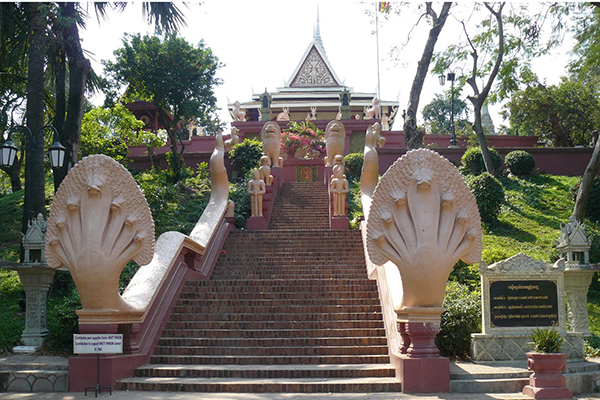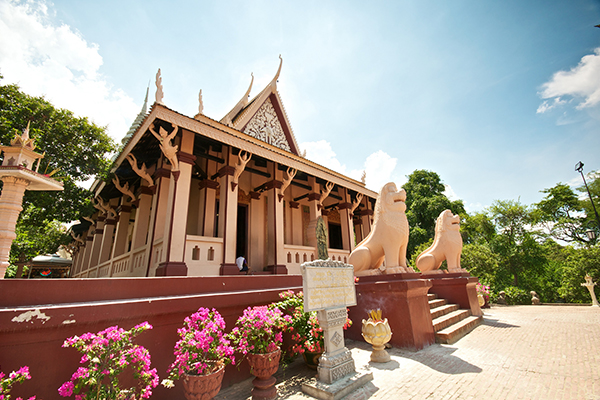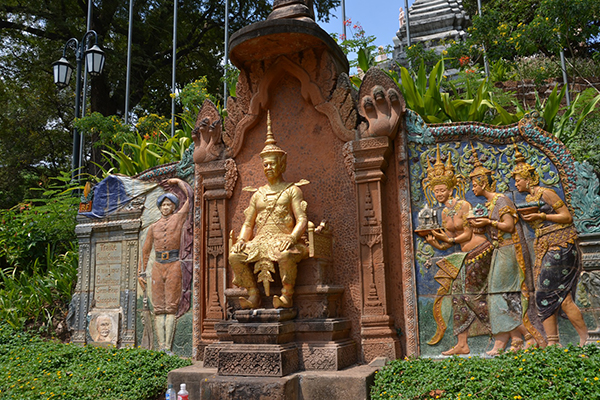Coming to Phnom Penh, apart from enjoying a drink in a historical space or watching unique shows bearing sharply Cambodian culture, don’t miss the opportunity to visit Wat Phnom. This is called the most ancient and sacred temple and attracts many distant Buddhists most.

The History of Wat Phnom Temple
Located at the intersection of 96 Street and Norodom Street, Wat Phnom is the most famous in Phnom Penh.
It is said that a rich woman named Daun Penh constructed the temple on an artificial hill. After the flood in 1372 in Phnom Penh, she rescued a timber, inside the timber had four Buddha statues, so she had created a hill and built a small temple. Hence the name Wat Phnom has appeared because, in Khmer, the hill is called “Phnom” and the temple is called “Wat”.
The temple was restored from 1926 until now. Because it has been over many decades, some structures have been added. Besides, the temple contains the ash of King Ponhea Yat who moved the Khmer Empire from Angkor to Phnom Penh.

The Architecture of Wat Phnom Temple
The temple has two directions for sightseeing, tourists visiting the temple will go up on away and down on another way. The way up is not high, on the way, there is the statue of god snake Naga and 2 beastmasters – familiar animals in the beliefs of Cambodians and the mascot that are seen in most of the Angkor Temples.
The temple on the hill worships like almost temples in Cambodia. Mrs. Penh is worshiped behind. Next to the statue of Penh, there is the statue of the God of wealth – a god according to Chinese beliefs. The tower built behind Mrs. Penh Statue is used to contain the remains of King Ponhea Yat.

The way down has a small square with a statue of King Ponhea Yat. Below is a giant grass clock that Chinese people donated to the temple. Currently, this grass clock still works well.
This area is the center of the annual New Year holiday in Cambodia and a few other important festivals. For Phnom Penh people, it’s very sacred. And for visitors, it is a must-visit place in Indochina tours to understand more about the capital of the country of temples.


